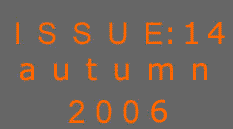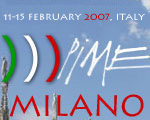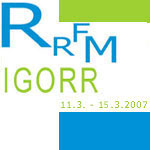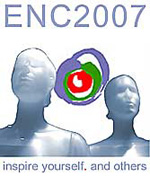ENS NEWS, N° 14: Sowing the seeds, securing the harvest
Hardly a week goes by without another disturbing
report in the media confirming one of the most worrying socio-educational
trends of recent years – the declining interest among young
people in studying the natural sciences and, subsequently, pursuing
a career in science. A BBC report recently highlighted how some
colleges and universities in the UK have had to cancel certain
courses or even close down departments because too few students
are interested in gaining a qualification in physics, maths or
chemistry. Sadly, this scenario is a familiar one in other European
countries too. In France, for example, the sciences are still
largely perceived by many young people as being too hard to grasp,
divorced from the realities of everyday life and not the best
option for cracking the job market. As a result, there are declining
numbers of French students opting to pass a science-based baccalauréat
and to take a science degree.
In a recent report, the IAEA stressed that the
ageing workforce in the nuclear sector is a “growing concern”,
adding: “A new generation of nuclear scientists and engineers
is also needed in countries planning to expand the use of nuclear
energy.” Well, what can we do to reverse the current trend
and ensure that there is a transfusion of sufficient young blood
to sustain and promote the nuclear revival?
This issue is by no means new. But the problem
still persists. Is it because the world of scientific research
still seems too distant for today’s youngsters, too stuffy
and esoteric? Maybe it’s a question of image and positioning
and science has quite simply not been “sold” effectively
to young people? Science just doesn’t seem “cool”
any more. Perhaps educationalists have failed to make the connection
in young people’s minds between the natural sciences and
the world we live in?
The anthropologist and biologist, Jacob Bronowski,
might have put his finger on one aspect of the problem when he
highlighted how hard work must go hand in hand with talent if
science is to produce results, saying: “Nothing in the world
can take the place of persistence. Nothing is more common than
unsuccessful men with talent.”
But there are signs that the tide is turning.
There are plenty of talented and committed young scientists out
there to take up the baton, as the activities of the Young Generation
Nuclear network regularly testify. Issue N°14 of ENS
NEWS highlights the efforts that are being made
in some countries to tackle the problem. It features a report
on how the CEA, in France, is getting to grips with the problem
thanks to a range of educational initiatives that put the emphasis
on interaction, effective communications, multimedia tools and
working closely in partnership with teachers and the government.
In an exclusive interview for ENS NEWS,
the new Director General of SCK-CEN in Belgium, Eric Van Walle,
expresses his views on the subject (and several others) and highlights
the training and exchange programmes that SCK-CEN offers at its
Mol facilities to talented young scientists and PhD students from
all over the world.
In Germany, industry in general is acutely aware
of the problem and has launched a range of initiatives, including
award schemes and grants, to tempt more young people to study
maths, physics and chemistry.
So, it would appear that the corner is being
turned in some countries, but much still remains to be done if
science is to become a more attractive career option for young
people today and for generations to come.
Whatever your take on the subject, ENS
NEWS would like to hear your views and experiences
on what is a crucial issue facing both the scientific community
and industry.
ENS NEWS N°14 kicks
off, as usual, with a word from the President. Frank Deconinck
gives readers the low-down on the recent Annual General Conference
(GC) of the IAEA, which featured a keynote speech from the IAEA’s
Director General and Nobel Peace Prize Winner, Mohammed ElBaradei.
Bertrand Barré then gives his personal perspective on the
GC.
In his regular column, Andrew Teller exposes
some of the poor reasoning, factual inaccuracies and double standards
that often underpin the arguments of the anti-nuclear brigade.
In the Events section of Issue N° 14, the
reporting spotlight first falls on ENS TOP SEAL, where nuclear
experts from Europe and beyond debated the latest research data
and technological innovations related to radioactive waste management.
Next the spotlight switches to Salamanca, Spain, where delegates
at the “sold-out” ENS TOP FUEL conference focused
on the current challenges and future direction of nuclear fuel
management. The next ENS conference on the agenda is PIME 2007,
which will take place in Milan, Italy, from 11-15 February - and
ENS NEWS features the first in a series of teasers on the subject
(please take note of the 2007 PIME Award information and send
in your entries!).
Next up, in September, is the European Nuclear Conference (ENC
2007).
In this edition’s Member Societies and
Corporate Members section, there is a presentation by Frank Deconinck
on nuclear medical imaging, which he gave at the IYNC (International
Youth Nuclear Congress), in June. Our colleagues from SKI in Sweden
have contributed an article on reactor kinetics equations related
to the Ringhals NPP. The section also includes two reports on
SCK-CEN that recently celebrated its 50th anniversary. The first
is a general introduction on the activities of SCK-CEN and the
other is the interview with Director General, Eric Van Walle.
The European institution section features three
very significant developments: the first concerns the European
Commission’s announcement on the Joint Undertaking proposal
on ITER; the second is a press release on the European Commission’s
approval of the investment plan for the EPR construction in Flamanville
that was submitted by EDF and the third is another press release,
this time outlining the European Commission’s Recommendation
on the management of decommissioning funds.
The World News section features an International
Nuclear Energy Academy (INEA) statement by Bertrand Barré
entitled HLW disposal: Status and Trends.
Enjoy the read!
| 
Mark O’Donovan
Editor-in-Chief
|
|
|





